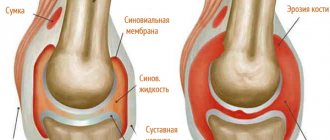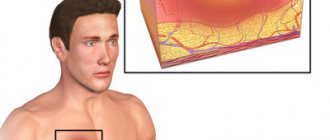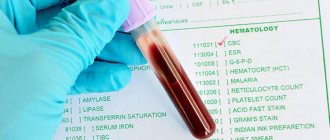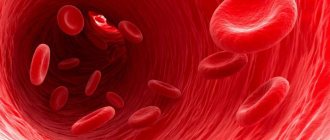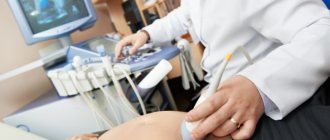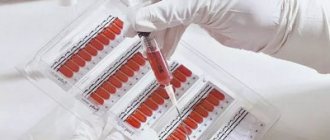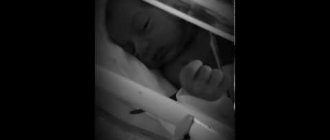Reactive arthritis is a non-infectious inflammation that affects the joints after an extra-articular infection: urogenital, nasopharyngeal, intestinal, and also after ocular (Reiter's syndrome). “Reactive arthritis” is a general collective term for non-purulent joint diseases that develop within 30 days of an infection. You can get this form of arthritis at any age, but most often young people (especially men) between 20 and 40 years old are affected. According to medical statistics, reactive arthritis occurs in approximately 2.5% of cases after intestinal infections and in 0.8% of cases after a genitourinary infection.
The term "reactive arthritis" appeared in 1969. Until this time, the disease was named after the German doctor Hans Reuther. However, he was an adherent of Nazi eugenics and took part in experiments on humans in concentration camps. Therefore, the disease is currently called “reactive arthritis”. And only the syndrome in which eye damage occurs is called by his name.
Representatives of certain nations have a certain predisposition to the development of reactive arthritis and Reiter's syndrome. Therefore, the disease develops mainly in individuals who have a genetic predisposition to it. Thus, almost 20% of the population of Scandinavian countries, approximately 4% of the population of northern Africa and 0.5-2% of the population of Japan have specific antigens that increase the likelihood of developing this pathology. In Europe, the prevalence of these antigens is 5−8%.
According to many experts, the disease is a rheumatic disease and can, in its active stage, affect vital organs and systems of a person. From this article you will learn how to treat reactive arthritis, what symptoms accompany it and how to prevent the occurrence of this disease.
General information about reactive arthritis
Reactive arthritis is an inflammatory disease of large and small joints. It develops against the background of a urogenital, intestinal infection or some time after its cure. The pathology is characterized by consistent involvement of the genitourinary system, eyes, and joints in the inflammatory process. Not all people whose bodies have been infected by infectious agents develop reactive arthritis. A relationship has been established between inflammatory joint damage and carriage of the HLA-B27 antigen. In this case, the likelihood of developing an autoimmune disease is 50 times higher.
Forecast
People who have undergone complex therapy for the disease have the following prognosis for their future life:
- In 20% of cases, symptoms of the disease disappear within 6 months;
- After proper therapy, exacerbations of pathology do not occur;
- In 25% of cases, the disease becomes chronic and progresses only at the acute stage;
- In 50% of cases, the disease progresses with renewed vigor after a certain period of time;
- In 5% of cases, the pathology is severe and provokes deformation of the joints and spine.
Causes of pathology
The selectivity of reactive arthritis is due to genetic predisposition. After the introduction of pathogens of urogenital and intestinal infections into the body, they penetrate the synovial fluid by hematogenous route. As a result of their contact with HLA-B27 antigens, complex protein complexes are formed, similar in structure to the cells of articular tissues. The immune system produces antibodies to destroy foreign proteins, but they attack the body’s own cells, which leads to the development of an aseptic inflammatory process.
Chlamydia
Chlamydia is a spherical pathogenic bacteria that parasitizes the human body in the form of cytoplasmic inclusions. The causative agent of urogenital reactive arthritis is C. trachomatis. In most cases, infection occurs through unprotected sexual contact. Less commonly, chlamydia is transmitted from person to person through household means, for example, through bedding and toiletries. It is also possible that the child may become infected during its passage through the birth canal.
Chlamydia under a microscope.
Other genitourinary infections
Less commonly, the causative agents of ureaplasmosis and mycoplasmosis act as etiofactors of reactive arthritis. These are the smallest microorganisms of the mycoplasma family - an intermediate link between viruses and bacteria (they do not have DNA and a cell membrane). In 70-80% of cases, the disease occurs in the form of asymptomatic carriage. But if the immune system does not work correctly, after bacteria enter the body, an inflammatory process in the joints starts.
Intestinal infections
Causative agents of intestinal infections - Yersinia, Salmonella, dysentery bacillus, Campylobacter, Clostridia - can provoke the development of reactive arthritis. These pathogenic bacteria are transmitted from person to person, usually through household means, and enter the body along with food. The risk of contracting intestinal infections increases when eating food that has not been heat-treated.
Respiratory infections
Pathogens of infections affecting the upper and lower respiratory tract extremely rarely cause the development of reactive arthritis. However, similar cases have been described in the medical literature. Most often, viruses act as etiofactors. They contain special proteins similar in structure to the cells of the synovial membranes. Therefore, the immune system attacks not only viruses, but also joint structures.
Other infectious diseases
A prerequisite for reactive arthritis can be viral hepatitis, HIV and other bacterial and viral infections. The main difference in pathogenesis is the absence of pathogens directly in the joints. The impetus for the development of inflammation is exclusively antibodies produced by the immune system. Therefore, there is a possibility of misdiagnosis. Comprehensive treatment of infectious arthritis is carried out, while the use of immunomodulators is necessary.
Diagnostic assistants
To make a more accurate diagnosis and clarify the origin of arthritic joint lesions, the doctor will perform the following examinations:
- CBC: increased ESR, signs of anemia, increased leukocytes.
- BAC: high level of globulins, C-reactive protein, fibrin, seromucoid, sialic acids.
- Study of coproculture using the RPGA method: detection of AT to Yersinia 1:160 and higher.
- Serological blood test: significant antibody titer in the blood - above 1:160.
- Examination of synovial joint fluid: it is cloudy, yellowish, with a high content of leukocytes, an increased number of neutrophils. Antibodies to Yersinia are detected in large quantities in this liquid.
- Study of antigens of the HLA system: subtype B27 is detected.
These diagnostic indicators, together with the anamnestic data, the patient’s symptoms and the clinic, confirm reactive arthritis of yersinia origin.
Characteristic signs and symptoms of pathology
Reactive arthritis is characterized by a classic triad of clinical manifestations - sequential damage to the eyes, urogenital tract and joints. The first signs appear approximately 2-4 weeks after symptoms of infection. The clinic lasts for 3-12 months. Then the severity of the symptoms begins to gradually weaken, until they disappear completely. This does not mean that the person has fully recovered. Under the influence of provoking external or internal factors, a relapse of reactive arthritis may occur with the involvement of healthy joints in the chronic inflammatory process.
Articular
Reactive arthritis always manifests itself acutely, affecting several joints of the legs. Most often, the interphalangeal, metatarsophalangeal, calcaneal, knee, and ankle joints are involved in the inflammatory process. There is aching, pressing pain that intensifies when walking. The joints increase in size, the skin over them swells, turns red, and becomes hot to the touch. Body temperature rises to 37-38 degrees, weakness, malaise, and fatigue appear.
Extra-articular
Extra-articular signs of reactive arthritis occur before the articular ones. First, urethritis occurs - inflammation of the walls of the urethra. The pathology is characterized by painful sensations, burning, itching when emptying the bladder. The urge to urinate becomes more frequent, and a small amount of urine is released.
Soon conjunctivitis joins urethritis. The eyelids turn red, swell, the mucous membrane becomes inflamed, photophobia and visual disturbances appear, black dots and colored spots appear before the eyes.
Symptoms
Manifestations of reactive arthritis can be varied. As a rule, 1-4 weeks before the appearance of joint changes, he suffered from an acute respiratory infection, an intestinal disorder, or had frequent and painful urination.
Three classic symptoms of reactive arthritis: inflammation of the joints (arthritis - pain in the joints, redness, swelling, hot joints, limited mobility), inflammation of the eyes (conjunctivitis - redness of the eyes, burning sensation in the eyes, watery eyes) and inflammation of the urinary tract (urethritis - pain , burning or cutting when urinating; prostatitis - pain or discomfort in the perineum, discomfort during urination and defecation, cystitis - frequent urination, irresistible urge and a burning sensation or pain in the lower abdomen during urination, frequent urination at night).
Arthritis begins acutely, the temperature rises, and general health worsens. The following are usually inflamed with reactive arthritis: knee, ankle joints, small joints of the feet; patients often report pain in the heels.
The joints involved are usually affected asymmetrically, that is, one side or the other of the body is more affected. Inflammation leads to stiffness (difficulty moving the joints after sleep), tenderness, swelling, warmth, and redness in the joints involved.
Reactive arthritis is characterized by “axial” damage to the joints of the hands and feet (which gives the fingers the appearance of “sausages”). Arthritis most often begins in one joint, and then within 1-2 weeks the pathological process spreads to other joints. The joints become swollen. The pain is very severe, the function of the joints is limited. Pain in the spine is often noted.
In addition, tiny, fluid-filled blisters may form on the skin of the palms of the hands and/or soles of the feet, sometimes filling with blood. The affected skin may peel and resemble psoriasis.
In the oral cavity, ulcerations may form on the hard, soft palate, and tongue. They may not be noticed by the patient, as they are often painless.
In most cases, the symptoms of conjunctivitis and urethritis are very mild and only 1-2 joints are inflamed. In some patients, however, reactive arthritis can be acute and severe, limiting their physical activity.
Which doctor should I contact?
A rheumatologist treats reactive arthritis. But since it is unlikely to independently determine the cause of joint pain, it is advisable to consult a general practitioner - a therapist. He will prescribe the necessary diagnostic measures, and after studying their results, refer the patient to a rheumatologist. Infectious disease specialists, venereologists, urologists, gynecologists, otolaryngologists, and gastroenterologists can take part in the examination, as well as further treatment.
Preventive actions
To prevent the development of pathology, experts recommend following these rules:
- Avoid casual sexual contact, which can lead to urogenital infections;
- Lead a correct lifestyle;
- Adhere to the rules of personal hygiene;
- Eat properly;
- Undergo medical examination in a timely manner.
Reactive arthritis is a rather complex disease that is accompanied by unpleasant symptoms and can cause dangerous health consequences.
To cope with the disease and avoid complications, if joint pain occurs, you should immediately consult a doctor and strictly follow his recommendations.
Methods for diagnosing the disease
Symptoms of reactive arthritis may mask other pathologies that affect the joints of the legs. This is deforming osteoarthritis, including gonarthrosis, infectious, rheumatoid, gouty arthritis, bursitis, tendovaginitis, synovitis. Therefore, a thorough differential diagnosis is carried out to exclude these diseases, as well as to identify the cause of the patient’s deterioration in well-being.
History taking
The primary diagnosis can be made on the basis of combined damage to the eyes, small and large joints of the legs, and urethra. History data is also important. The development of reactive arthritis is indicated by recent or ongoing urogenital, intestinal, and respiratory infections. The doctor asks the patient about the presence of autoimmune pathologies in relatives, for example, psoriasis or ankylosing spondylitis.
Laboratory research
The inflammatory process occurring in the body is detected at the stage of general clinical tests by an increase in the level of leukocytes and an increased erythrocyte sedimentation rate. In the biochemical and serological diagnosis of reactive arthritis, the most popular method is the polymerase chain reaction, which makes it possible to establish the species of infectious agents.
Additionally, synovial fluid is examined. Signs of pathology include low viscosity, increased levels of leukocytes, and poor formation of mucin clots.
Instrumental studies
Using radiography, you can identify signs of joint damage - narrowing of the joint space, erosion of bone surfaces. On images taken in two projections, heel spurs, paravertebral ossification, and periostitis of the bones of the feet are visualized. In most cases, arthroscopy is not required.
For a more detailed study of articular structures, MRI is sometimes prescribed, which allows one to assess the condition of cartilage, muscles, ligamentous-tendon apparatus, nerve trunks, and blood vessels.
Introduction
Reactive arthritis is a type of arthritis that occurs as a “reaction” to infection in other parts of the body. Inflammation is a characteristic tissue response to injury or disease and is characterized by:
- swelling;
- redness;
- high body temperature;
- pain.
In addition to joint inflammation, the pathology is associated with two other symptoms:
- redness and inflammation of the eyes;
- inflammation of the urinary tract.
These symptoms may occur separately, together, or not at all.
How is reactive arthritis treated?
Patients are prescribed complex therapy for the pathology. At the same time, the infection that triggered the development of arthritis is treated, and the symptoms of damage to the urethra, mucous membranes of the eyes and joints are eliminated. The main goal of therapy is to achieve stable remission.
Medicines
Treatment regimens include antibiotics to which pathogenic microorganisms are most sensitive. The most commonly used are tetracyclines, macrolides, fluoroquinolones, cephalosporins, and semisynthetic penicillins. To prevent complications of antibiotic therapy, antifungal agents, hepatoprotectors, eubiotics, and balanced complexes of vitamins and microelements are used.
| Group of drugs for the treatment of reactive arthritis | Names of medicines |
| Immunosuppressants | Azathioprine, Sulfasalazine, Methotrexate |
| TNF inhibitors | Etanercept, Infliximab |
| Glucocorticosteroids | Methylprednisolone, Diprospan, Flosterone, Dexamethasone |
| Nonsteroidal anti-inflammatory drugs | Diclofenac, Indomethacin, Meloxicam, Ketorolac, Nimesulide, Lornoxicam, Ibuprofen, Etoricoxib, Celecoxib, Rofecoxib |
| Preparations for local application | Dimexide, Voltaren, Ortofen, Nise, Ketorol, Nurofen, Dolgit, Bystrumgel |
Physiotherapy
Physiotherapy for reactive arthritis uses magnetic therapy, sinusoidal modulating currents, cryotherapy, laser therapy, ozokerite treatment, paraffin applications, and UHF therapy.
To relieve severe pain, phonophoresis or electrophoresis with glucocorticosteroids, anesthetics, B vitamins, and chondroprotectors is performed.
Surgical treatment
There is no need for surgical treatment of patients. In some cases, exudate is removed from the joint using puncture, and its cavity is treated with solutions with antimicrobial and antiseptic activity.
Therapeutic gymnastics and massage
Physical therapy classes are carried out under the guidance of a physical therapy doctor immediately after severe pain and acute inflammation have been relieved. The goals of daily exercise are to strengthen muscles, improve blood circulation, and increase range of motion in joints. Patients are shown shallow lunges and squats, simulating cycling in a lying position.
Therapeutic gymnastics is always combined with sessions of classical, vacuum, and acupuncture massage. During the procedures, the massage therapist works on tense muscles, performing kneading, stroking, and vibration. After 10-20 sessions, pain, sensitivity disorders, stiffness, and muscle spasms are eliminated.
Traditional methods
At the remission stage, doctors allow patients to get rid of residual discomfort using folk remedies. Homemade ointments, infusions and decoctions of medicinal herbs, vodka and oil tinctures, and compresses are used. Their weak therapeutic effect is due to their local irritating, warming, and distracting effects.
Diet
A therapeutic diet is not an independent method of treating reactive arthritis. Compliance with it does not reduce the severity of symptoms or weaken inflammatory processes. Rheumatologists only recommend excluding high-fat foods and alcohol from the diet, which provoke an exacerbation of the disease.
Nutritional Features
To restore health and strengthen your immune system, you need to make adjustments to your daily diet.
During illness, it is necessary to consume a variety of foods that are enriched with minerals and vitamins.
It is necessary to exclude spicy foods and fatty foods from the diet. Preference should be given to stewed and lean foods. It is advisable to eat large quantities of sea fish. It contains polyunsaturated fatty acids, which have a beneficial effect on the condition of cartilage tissue.
Some vegetables from the nightshade group can provoke an exacerbation of the disease. Therefore, potatoes, tomatoes, sweet peppers and eggplants must be consumed with extreme caution. During the period of illness, it is important to maintain a balance of essential nutritional elements, therefore following high- or low-calorie diets is not recommended. It is best to give preference to a salt-free menu, which includes many foods containing calcium.
The diet during illness should be aimed at reducing acidity. Therefore, the following categories of products should be present in the diet:
- Bird and fish;
- Dairy products;
- Vegetables, berries and fruits;
- Honey;
- Garlic;
- Fish fat.
Possible consequences
Every tenth patient who has suffered reactive arthritis experiences foot deformation and develops flat feet. In the absence of medical intervention, a chronic inflammatory process leads to the gradual destruction of cartilage and bone structures, provoking the appearance of deforming arthrosis. As a result of partial or complete fusion of the joint space, ankylosis occurs, or immobilization of the joint.
Rehabilitation
Treatment of reactive arthritis can take from several months to six months. After the acute inflammatory process is relieved, massage, physiotherapeutic treatment, and special gymnastics are prescribed.
To speed up the rate of recovery, you must adhere to several rules.
- You should pay attention to nutrition. The diet should contain vegetables, fruits, dairy products, cottage cheese, cheese, nuts, fish, and lean meat. Fried, fatty, spicy foods are prohibited.
- It is necessary to maintain a drinking regime (at least 1.5-2 liters per day).
- Massage is prescribed during the period of remission. During the session, muscles relax, blood flow at the site of inflammation increases, and more nutrients and oxygen enter the tissues.
- The ideal sport for joint diseases is swimming. Since a person is in water, the load on all parts of the body is distributed evenly.
- Therapeutic exercises are prohibited during exacerbations. After reducing the inflammatory reaction, consultation with a rehabilitation specialist is necessary. If there are no contraindications, the doctor will select a set of exercises and show you the technique for performing them.
- Physical procedures can reduce inflammation, tone muscles, and increase blood flow. The most effective treatments for reactive arthritis are phonophoresis with the use of anti-inflammatory and painkillers, magnetic therapy, shock wave therapy, and ultrasound.
Extra-articular manifestations of ReA
Typical for ReA is the involvement of mucous membranes in the pathological process. Clinically, this is presented in the form of conjunctivitis, ulcers of the mouth and nose, and damage to the mucous membranes of the genitourinary tract. Eye damage may generally be the very first sign of developing ReA. Moreover, the combination of conjunctivitis, arthritis and urethritis is the classic triad of reactive arthritis, also known as Reiter's syndrome . The skin can also be affected, but there are no typical manifestations, and these skin changes are quite varied, in some cases “masked” as other skin diseases. Damage to the heart, lungs, pleura, kidneys, and nervous system is much less common, which is an indication of a protracted course and an unfavorable prognosis. The symptoms of chlamydial and postenterocolitic arthritis are similar.
Risk factors
Reactive arthritis is believed to be partly a genetic disease. Therefore, if one of the parents suffered from the disease, then there is a high probability that genetic markers will be identified in children. People aged 20 to 40 years are at risk. Men, unlike women, suffer more severely from the disease, and their risk of developing complications is higher.
As in adults, in children this pathology develops after illnesses, mainly of an inflammatory nature.
Children are also at particular risk. Provoking factors include:
- poor hygiene;
- hypothermia;
- presence of chronic diseases;
- high humidity and poor ventilation in the room;
- allergies;
- avitaminosis.
Against this background, the child’s immunity weakens, and it is not difficult for pathogenic organisms to penetrate the tissues. As a preventive measure, you should strengthen the immune system, play sports, harden yourself, and take vitamin and mineral complexes.
How to treat a pregnant and lactating woman
In this case, the need for therapy is determined taking into account the risk of taking medications. If a pregnant woman has the opportunity to delay treatment, wait until childbirth and then carry out the above therapy.
If treatment is urgently needed, use those medications that are allowed during pregnancy. Of the antibacterial drugs, only Vilprafen is such. NSAIDs may be used. Glucocorticoids and cytostatics are contraindicated during pregnancy.
Treatment for nursing mothers is carried out according to the usual principles; breastfeeding is stopped for this period.
What is reactive synovitis: symptoms and treatment of the knee joint
Exudative synovitis occurs as a result of inflammation of the synovial membrane of the joint and the formation of exudate in it. Synovitis can occur for several reasons; the most common types of synovitis are aseptic and infectious.
The aseptic form of the disease includes post-traumatic synovitis. This disease occurs as a result of a person being injured and after that an inflammatory process begins in the joint.
The reactive type of synovitis of the knee joint, like the hip, is usually a side sign of other diseases. These ailments include pathological metabolic and autoimmune processes of the body.
Reactive damage to the knee or hip joint most often occurs in children and adolescents. For example, a child suffered a knee injury while playing, and the bruise provoked a reactive type of synovitis of the knee.
Since there are quite a few causes of synovitis, the accompanying symptoms vary. In one case, allergic synovitis occurs, in the other, tenosynovitis. In each individual case, the doctor is obliged to select an individual course of therapy.
Diagnosis and treatment
When suffering from synovitis, self-medication will not lead to the desired results, and can significantly worsen the patient’s condition. The doctor selects the treatment method according to the presenting symptoms and the stage at which the disease is located.
Reactive synovitis of the hip and knee joints is treated with medications or surgery. An operation to treat synovitis must necessarily be accompanied by a course of medications that corrects the pathologies of metabolic processes and a restorative set of procedures.
One of the provoking causes of knee or hip inflammation may be arthritis. In this case, the doctor prescribes an anti-inflammatory course of therapy in combination with painkillers.
However, everything depends on the severity of the disease. If the disease is advanced, doctors advise removing the damaged tissue. This operation is classified as arthroscopic surgery.
Based on the presenting symptoms and examination results, several types of this disease are distinguished; synovitis can be:
- Reactive synovitis of the knee joint;
- infectious synovitis;
- tenosynovitis;
- allergic synovitis.
In the treatment of any of the above diseases, it is important to use restorative and symptomatic therapy. If there is a risk of developing an infectious process, the doctor must prescribe a course of antibacterial drugs.
To accurately identify a disease such as reactive synovitis, modern medicine uses arthroscopic diagnosis. Sometimes this disease can develop in a latent form and can be detected using thermal imaging.
If the disease is mild (minimal synovitis), splints and pressure bandages are widely used to secure the knee or hip joint.
Note! Reactive synovitis is successfully treated in specialized sanatoriums, where a course of physiotherapy is added to drug treatment. Mud therapy is welcomed and is widely used in various resorts. Sulfide and sodium chloride waters will help defeat the disease and restore health to children and adults.
You should not ignore traditional medicine, since its remedies are also quite effective. Bay oil, which is used as a rub on the affected area, has a good anti-inflammatory effect. The recipe for its preparation is quite simple:
- you will need 1 cup of any vegetable oil, 2 tablespoons of chopped bay leaf and a container with a tight lid;
- mix the bay leaf with the existing oil, close the container with a lid and leave to infuse for one week;
- After the oil has infused, it should be strained.
This remedy is rubbed into the area of the sore hip or knee joint with gentle massaging movements, at least three times a day. This folk medicine is also very effective in the treatment of elbow synovitis.
Another factor in the occurrence of reactive synovitis of the hip joint can be bursitis. Since, despite the many types of synovitis, its symptoms are similar to each other (pain, inflammation), only a qualified doctor can accurately determine the area of the lesion and the form of the disease.
Important! You should not neglect even the slightest manifestations of symptoms of synovitis; you should immediately contact a medical facility. Otherwise, this disease can lead to undesirable consequences and significant deterioration in health.
Causes of the disease
It is necessary to talk more specifically about the factors that can provoke elbow or reactive synovitis of the hip joint.
The cause can be any mechanical injury, and the joint can become inflamed at any time. Synovitis can also develop as a result of a congenital pathology of the structure of the joint (joint instability) or during an allergic reaction of the body.
After severe damage to a joint (abrasion, cut, bruise or dislocation), an inflammatory process begins in it. Children often develop tenosynovitis.
If a child or adult feels the first signs of illness, you should immediately go to the hospital.
General symptoms for all types of synovitis
It is quite simple to diagnose and establish reactive synovitis, since its symptoms are exacerbated. Signs of the disease include:
- acute pain syndrome in the area of the damaged joint;
- decreased mobility of the diseased joint;
- the ligamentous apparatus is weakened and has lost its elasticity;
- in rare cases, body temperature rises.
In order to prevent further development of the disease and its accompanying consequences, you need to consult a doctor at the moment when the symptoms just begin to appear. Children who may get injured in the knee or hip joint during outdoor games should be under close attention.
The reactive type of synovitis can be dangerous and cause great discomfort to the patient. The most common site of inflammation is the knee joints. A strong feeling of discomfort and pronounced signs of the disease may appear as early as the second day after injury.
The reactive type of synovitis is accompanied by constant nagging and aching pain in the hip, elbow or knee joint. When making a diagnosis, doctors must be very careful not to confuse the reactive type of synovitis with another disease with a similar set of symptoms.
If treatment is started promptly, tenosynovitis is harmless and will not lead to complications in the functionality of the joint, both in children and adults. Before starting therapeutic actions, the patient undergoes a thorough diagnosis, the doctor carefully examines the patient and assesses the degree of damage to the joint.
Quite often, to make an accurate diagnosis, you have to resort to the puncturing technique. This procedure involves the doctor making a small puncture of the skin in the area of the diseased joint and taking a tissue sample, which is then carefully examined.
Such manipulations help to clearly determine the degree of damage to articular tissues. And only after establishing a reliable diagnosis can the doctor prescribe adequate treatment.
In cases where the articular tissues have undergone irreversible deformation processes, the doctor recommends surgery.
To prevent this from happening, you need to contact medical institutions in a timely manner and not waste precious time, since the reactive type of synovitis is very dangerous.
Treatment with traditional methods
After consultation with a doctor, treatment of reactive arthritis can be supplemented with folk remedies. Effective in relieving joint pain syndrome are:
- Compress – grate 1 potato, 1 radish, 1 horseradish root on a fine grater, mix the pulp with 1 tbsp. l. honey, place the mixture, without squeezing, on gauze folded in several layers, apply to the sore joint, and secure with a woolen scarf. The procedure is done at night.
- Ointment - mix olive oil with crushed comfrey leaves (1/1), simmer over low heat or in a water bath, strain, add 2 tbsp. l. wax, simmer until dissolved, add two capsules of vitamin E, pour into a glass container, cool, lubricate sore joints 3 times a day.
- Warming compress - heat sea salt in a frying pan or baking sheet, put it in a warm sock, and apply it to the sore joint. The procedure is performed several times a day. Leave until the salt cools completely.
Disease prevention
Since reactive arthritis is caused by pathogens of various infections, the main preventive measures should be aimed at preventing the entry of the infectious agent into the body.
It is not possible to completely isolate yourself from pathogenic microorganisms, but it is not difficult for any patient to follow the following rules that reduce the risk of infection:
- Maintain personal hygiene: wash your hands when coming from the street and after visiting public places, before eating.
- Promptly identify foci of chronic infections in yourself, as well as in family members, and undergo treatment. If possible, isolate sick persons in a separate room.
- Follow the rules for storing and preparing food.
- Do not visit public places during outbreaks of intestinal infections or acute respiratory diseases.
- Use protection during sexual intercourse and have one regular sexual partner.
- Plan your pregnancy and, before pregnancy, get tested for chlamydia; if a chronic infection is detected, undergo an antibacterial course of therapy.
Complications in the absence of therapy
Late diagnosis and untreated arthropathy in women and men can have serious consequences. Diseased joints can become deformed and their mobility is limited. Periodic pain also appears, which is difficult to eliminate with medication. The most serious complication is ankylosis, complete immobilization of the affected diarthrosis. Complicated reactive arthritis often leads to disability. Inflammation affects internal organs, and subsequently their functions are disrupted and diseases develop: glomerulonephritis, myocarditis. Characterized by blurred vision and damage to the heart valves.
Clinical course and prognosis
- In most individuals, the disease is self-limiting, with the average duration of the first episode of arthritis being 4-6 months. Complications of ReA occur mainly due to aggressive arthritis and are most likely if the patient has the HLA-B27 gene.
- Approximately 50% of patients experience relapses of arthritis at various intervals.
- Chronic disease with persistence of symptoms for more than one year is observed in approximately 17% of patients.
- Erosive joint damage is especially common in the small joints of the foot. Approximately 12% of patients develop foot deformities, but severe deformities are rare [10, 14].
- If untreated or recurrent in nature, acute anterior uveitis can lead to the rapid formation of cataracts.
Diagnostic tests for ReA:
- clinical blood test (detection of increased ESR);
- clinical urine analysis (determination of kidney pathology and urethritis);
- examination of the first portion of urine (to confirm urethritis);
- cultural urogenital test (detection of the etiological agent);
- kidney and liver function tests;
- detection of HLA-B27;
- X-ray of the affected and sacroiliac joints;
- ECG;
- echocardiogram;
- ophthalmological examination (in case of eye damage);
- tests to rule out other rheumatic diseases (determining rheumatoid factor [rheumatoid arthritis] and serum uric acid [gout]) [10].
Diagnosis of ReA
is based on the following criteria:
- Typical joint damage (peripheral, asymmetrical, oligoarticular, lower extremities, especially knee and ankle joints).
- Exciter verification:
- at the entrance gate (scraping from the urethra);
- specific antibodies in the blood in reliable titers;
- pathogen substrate by polymerase chain reaction or specific monoclonal antibodies.
- Presence of HLA-B27 antigen.
- Typical anamnesis (urethritis) and/or clinical manifestations of urogenital infection.
To make a final diagnosis of ReA, the presence of the first two criteria is sufficient; criteria 3 and 4 are auxiliary [10].
Differential diagnosis of ReA with the most common arthritis at the early stage of the disease is presented in.
Treatment for ReA is carried out in two directions:
- Antibacterial therapy.
- Therapy of articular syndrome.
Drug therapy
Taking medications for the treatment of reactive arthritis is strictly consistent.
Antibacterial agents
Antibiotics suppress bacterial infections. The course of antibiotic therapy lasts 2-4 weeks, depending on the effectiveness of the drug against the infectious pathogen.
For ReA, new generation antibiotics from the groups of macrolides (Midecamycin, Erythromycin, Azithromycin), tetracyclines (Doxycycline, Tetracycline), fluoroquinolones (Levofloxacin, Ofloxacin) are mainly prescribed in tablets and capsules. If the disease is prolonged, it is possible to replace a drug from a certain group with another, combined antibacterial agents.
Probiotics in the form of powder, suspension, capsules (Linex, Enterol, Lactobacterin, Bifiform, Bifidumbacterin) reduce the risk of side effects of antibiotics and accelerate the process of removing infection decay products from the body.
When conjunctivitis occurs, antibacterial drops are prescribed (Levomycetin, Phenylephrine, Tetracycline, Allbucid, Cyclopentolate).
Nonsteroidal analgesics
NSAIDs have anti-inflammatory, analgesic, and antipyretic effects. Prescribed in the form of tablets, capsules or intramuscular injections (Naproxen, Ibuprofen, Meloxicam, Diclofenac, Nimesulide). Take with caution for intestinal infections.
To relieve joint pain and swelling, non-steroidal anesthetic ointments and gels (Indomethacin, Hydrocortisone, Prednisolone) are used.
Nonsteroidal analgesics and glucocorticosteroids
Treatment with glucocorticosteroids
Prescribing hormonal drugs is appropriate if it is impossible to stop the inflammatory process by taking NSAIDs. They have a more pronounced anti-inflammatory effect. Prescribed in the form of capsules, droppers, intra-articular injections, creams (Prednisolone, Dexamethasone, Methylprednisolone, Cortisone).
Immunomodulatory drugs
It is possible to normalize the functions of the body’s immune system in case of ReA using three groups of drugs:
- Antihistamines are prescribed for grade 1 ReA in tablets (Suprastin, Pipolfen, Diphenhydramine), eliminate swelling of the respiratory system, skin rashes and irritations, and watery eyes;
- Immunostimulants - for grade 1 ReA in tablets, capsules (Cycloferon, Imunofan, Galavit, Amiksin, Likopid), stimulate the body's protective functions in the fight against infection;
- Immunosuppressants (immunosuppressants, cytostatics) - for grade 2-3 ReA in the form of droppers, intramuscular injections (D-penicillamine, Methotrexate, Sulfasalazine, Azathioprine, Infliximab), when the inflammatory reaction of the joints does not subside.
Treatment with chondroprotectors
In the treatment of chronic reactive arthritis, it is appropriate to prescribe chondroprotectors (Dona, Chondroxide, Chondroitin), which improve the motor function of joints by renewing the cartilage lining. Prescribed as intra-articular injections in combination with hyaluronic acid.
Is it possible to play sports
Moderate physical activity when the inflammatory process subsides in reactive arthritis under the supervision of a medical specialist is even indicated when it comes to physical therapy.
Professional sports, any traumatic sports (weightlifting, parachute jumping, long-distance running), as well as exhausting training, are contraindicated for patients with a history of reactive arthritis. Any injury to the joint or its overstrain can trigger the disease and return to aggravation.
Swimming, gymnastic exercises, and light cardio training are not prohibited during the remission stage. Physical activity has a beneficial effect on the musculoskeletal system and strengthens the patient’s body as a whole.
Physiotherapeutic treatment
Physiotherapeutic procedures outside the exacerbation phase, during periods of recovery after illness, are an auxiliary method in the treatment of joints with ReA:
- Cryotherapy – improves blood circulation in joints, eliminates swelling, reduces the pain threshold (3 procedures/day for 15 minutes for two to three weeks);
- Phonophoresis – has an analgesic, anti-inflammatory effect on joints (1 procedure/day for 7 minutes for 10 days);
- UHF – improves lymph flow, blood circulation, has an anti-inflammatory, analgesic effect (1 procedure/day for 15 minutes for 10 days);
- Magnetotherapy – improves metabolism in joints, promotes rapid tissue regeneration (1 procedure/day for 15 minutes for a week);
- Therapeutic baths (sea salt, hydrogen sulfide) - have a relaxing, anti-inflammatory effect on joints and muscles (1 procedure/day for 20 minutes for 10 days).
Physiotherapy
